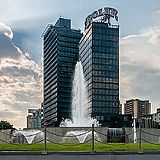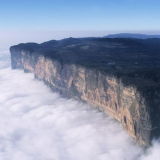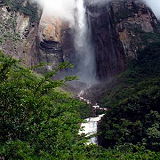
|
Venezuela Venezuela Last Updated: 06/14/2023 |
| Venezuela is a country on the northern coast of South America, consisting of a continental landmass and many islands and islets in the Caribbean Sea. It has a territorial extension of 916,445 km2 (353,841 sq mi), and its population was estimated at 29 million in 2022. The capital and largest urban agglomeration is the city of Caracas. | |
| Here are some key points about Venezuela: - Geographical Features: Venezuela is known for its diverse geography, which includes the Andes Mountains in the west, the vast plains of the Llanos in the central region, the Orinoco River basin, and the beautiful Caribbean coastline. - Capital and Major Cities: The capital city of Venezuela is Caracas, which is the country's largest city. Other major cities include Maracaibo, Valencia, Barquisimeto, and Maracay. - Natural Resources: Venezuela is rich in natural resources, particularly oil. It has one of the world's largest oil reserves and is a major producer and exporter of petroleum. The country also has significant reserves of natural gas, gold, diamonds, and other minerals. - Venezuelan Culture: Venezuelan culture is a blend of indigenous, European, and African influences. The country is known for its lively music and dance, including genres such as salsa, merengue, and joropo. Traditional celebrations and festivals, such as Carnaval and the Feast of the Virgen de la Chinita, are important cultural events. - Angel Falls: Located in Canaima National Park, Angel Falls is the world's highest uninterrupted waterfall, with a height of over 3,200 feet (979 meters). It is a popular tourist attraction and a UNESCO World Heritage site. - Food and Cuisine: Venezuelan cuisine is diverse and flavorful. Arepas, a type of cornbread filled with various ingredients, are a staple food. Other popular dishes include pabellón criollo (shredded beef with rice, black beans, and plantains) and hallacas (similar to tamales). - National Parks and Natural Beauty: Venezuela is home to numerous national parks and protected areas, showcasing its rich biodiversity. Canaima National Park, Morrocoy National Park, and Los Roques Archipelago National Park are among the notable natural attractions. - Historical Landmarks: Venezuela has several historical landmarks and UNESCO World Heritage sites, such as Coro, a well-preserved colonial town, and Ciudad Universitaria de Caracas, a university campus known for its modernist architecture. - Challenges and Political Situation: Venezuela has faced significant economic and political challenges in recent years. Hyperinflation, shortages of basic goods, and political instability have had an impact on the country and its people. | |
Wikipedia
Venezuela » Ven
Place » City

|
Caracas, Venezuela Place » City Caracas is the capital and largest city of Venezuela, and the center of the Metropolitan Region of Caraca. Caracas is located along the Guaire River in the northern part of the country, within the Caracas Valley of the Venezuelan coastal mountain range. The Metropolitan Region of Caracas has an estimated population of almost 5 million inhabitants. 76 views 💖 1Venezuela |

|
Mochima National Park Place » Outdoors Mochima National Park is a breathtaking coastal park in Sucre and Anzoátegui states, Venezuela. Established in 1973, it spans over 94,000 hectares and encompasses both lush mainland areas and a stunning archipelago in the Caribbean Sea. Known for its crystal-clear waters, diverse marine life, and pristine beaches, it is a haven for nature lovers and adventure seekers alike. 59 views 💖 1Sucre, Venezuela |

|
San Carlos de la Barra Fortress Place » Historical Place The Castillo de San Carlos is a historical fortress located in the city of Pampatar on Margarita Island, which is part of the Nueva Esparta state in Venezuela. This fortress has played a significant role in the region's history and is a popular tourist attraction. 66 views 💖 1San Bernardo 4030, Zulia, Venezuela |

|
Mount Roraima Place » Outdoors Mount Roraima is a prominent landmark located within Canaima National Park, the southeastern corner of Venezuela, bordering Guyana and Brazil. It is part of the Pakaraima Mountains and forms a natural border between these three countries. Mount Roraima forms the highest peak of Guyana's Highland Range. 376 views 💖 7Parque Nacional Canaima, Venezuela |

|
Canaima National Park Place » Outdoors Canaima National Park is located in the Gran Sabana region, southeastern Venezuela, bordering Guyana and Brazil. It covers an area of approximately 30,000 square kilometers (12,000 square miles) and is part of the larger Guiana Shield region. 381 views 💖 8Gran Sabana, Venezuela |

|
Angel Falls Place » Outdoors Angel Falls is the world's highest uninterrupted waterfall in Venezuela, with a height of 979 m and a plunge of 807 m. Angel Falls is 15 times higher than Niagara Falls with its total of approximately 52 meters. 436 views 💖 8Venezuela |
Write a Review :
Venezuela
|
|